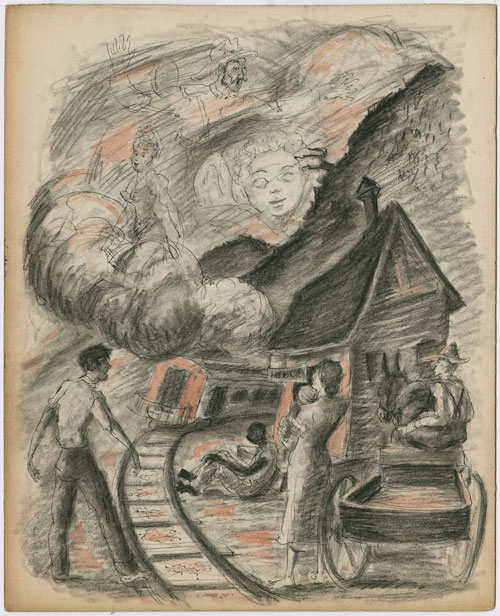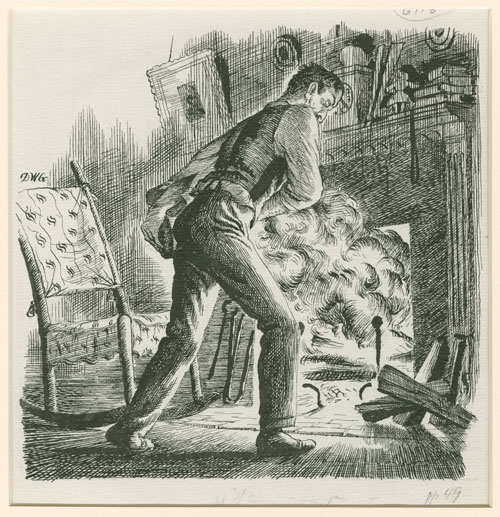— From Time magazine, Jan. 23, 1956
Category: Literature
Among Rocky Mount’s souvenirs: hat tip in ‘Howl’
Launching pad for the fast-food apple turnover and the “I Have a Dream” speech…. home of the pro baseball team that cost Jim Thorpe his gold medals… birthplace of Kaye Gibbons and Allan Gurganus, Phil Ford and Julius Peppers, Mike Easley and Roy Cooper, Thelonious Monk and Kay Kyser, Buck Leonard and Sugar Ray Leonard… source of the Electra-piano played by John Lennon in “Imagine”… site of North Carolina’s first sit-down barbecue joint…writing retreat for Jack Kerouac….
Is there no end to the notable and footnotable distinctions dotting Rocky Mount’s civic CV? And here’s yet another, courtesy of Rocky Mount-reared fiction writer Megan Mayhew Bergman, blogging for Kenyon Review:
“Kerouac’s time in Rocky Mount wound its way into other Beat work.
“Allen Ginsberg namedrops Rocky Mount in his epic poem Howl, writing of those ‘who retired to Mexico to cultivate a habit, or Rocky Mount to tender Buddha or Tangiers to boys or Southern Pacific to the black locomotive or Harvard to Narcissus to Woodlawn to the daisychain or grave.’ ”
Look Homeward, Angel Illustrated
On Thomas Wolfe’s birthday, we recall not only the writer himself, but also those who’ve been inspired by him. Here’s one story of those who interpreted Wolfe’s words through art.
In early 1945 the Limited Editions Club, a New York publisher, held a contest to find illustrators for about 45 literary classics, including Thomas Wolfe’s Look Homeward, Angel. Artists were asked to submit a portfolio of prospective illustrations for works on the list. The contest garnered more than 300 entries, with five illustrators awarded first prize and seven granted honorable mention. The list of 12 finalists did not include the name of Harvey Harris, a 30-year-old artist living in West Pittston, Pennsylvania. But not long after the contest results were announced, Harris, who had submitted 55 watercolor and ink drawings of scenes from Wolfe’s seminal work, received a letter from George Macy, the publisher of the Limited Editions Club. Macy expressed interest in possibly publishing Harris’s illustrations with Wolfe’s text. He told the aspiring illustrator that he would seek permission from Wolfe’s publisher, Scribner’s. But Macy’s plans were foiled and Harris’s hopes dashed when Scribner’s declined the request to use Wolfe’s text. Whitney Darrow of Scribner’s told Macy that the publishing house was considering publication of its own illustrated edition of Look Homeward, Angel. And then added comment on Harris’s drawings, “Of course, judgment of art is individual and personal and others might like these tremendously, but they do not appeal to us as being proper illustrations for the book by Thomas Wolfe.”
Two years later, Scribner’s followed through on its plans, publishing Wolfe’s book with illustrations by Douglas Gorsline, who, coincidentally, was the son-in-law of Maxwell Perkins, Wolfe’s longtime editor. Gorsline’s illustrations lived on and their creator enjoyed a successful career as a book illustrator and artist. Harris abandoned his ambitions as an illustrator and turned toward a career teaching art. His drawings for Look Homeward, Angel were boxed up and put away, shared little until their acquisition by the North Carolina Collection in 2004.
Harris’s works were never published until earlier this year when the North Carolina Collection, in collaboration with the Thomas Wolfe Society, published The Look Homeward, Angel Illustrations of Harvey Harris, edited, with an introduction by Janice McCullagh. The illustrations above are Harvey Harris’s representations of W.O. Gant’s ritual and the train to Altamont. The illustration below is by Douglas Gorsline. Perhaps Mr. Darrow was wrong in his appraisal of Harris. Some of us certainly think so.
Death noted: William Styron’s roommate
“Am now rooming [at Duke] with Art Katz of Memphis and Claude Kirk of Montgomery, Ala. Both are transfers from Emory, and they’re good guys.”
— Letter from William Styron to his father, March 12, 1944
“[Florida Gov. Claude Kirk] rises to the challenge, occasionally with a fine and almost classic use of the language… ‘Styron taught me about language, about balance and words and how to put them together and get the most out of them.’ ”
— Harper’s magazine, 1968
“Styron settles down to his second Bloody Mary, made with lemons sent him every year by his college roommate….”
— Yale Literary magazine (Fall 1968)
Hard to imagine odder roomies than the saturnine man of letters and the “spectacularly colorful” demagogue…. also hard to imagine that Kirk absorbed such an appreciation of the language while bunking with Styron — couldn’t have been more than a semester or two. I think I once asked Styron about their relationship but can’t find any evidence thereof.
Ngram: Good old mountain dew? Not exactly
Golden untarnished by revelation of prison record
On this day in 1958: In New York, Harry Golden’s publisher receives an anonymous letter asking, “Do you know that your author . . . is a swindler, a cheat, and an ex-con and jail bird who has victimized widows and orphans?”
In fact, almost no one knows that Golden, whose “Only in America” ranks No. 1 on the nonfiction best-seller list, is the Harry Goldhurst who served 4-1/2 years in a New York prison for mail fraud and stock manipulation. Golden was released in 1933 and in 1940 moved to Charlotte, where he became nationally known as publisher of the Carolina Israelite, an iconoclastic monthly, and as author of warm and witty memoirs.
The revelation about his prison record will not only prove harmless to Golden’s writing career but also expand his fame to television, where Jack Paar makes him a frequent guest on the “Tonight Show.”
Ngram knew LSMFT before it went PFFFT
Link dump shrugs off Iowa straw poll, heads to N.H.
— Captured battle flags returning to N.C. coast (and not everybody is happy about it).
— Tidbits of Tar Heelia tucked in David McCullough’s latest.
— For Colored Agricultural Fair, “The whole city participated, just like Bele Chere.”
— Nitrate negatives yield a (slow-loading) gallery of “Old Wilmington Mystery Photos.”
— Who would steal Mitch Easter’s storied guitars?
Thomas Wolfe, a ‘great, obnoxious beast’?
“Thomas Wolfe, the novelist, has just taken an apartment at 865 First Avenue….Going down in the elevator the other morning, he was joined by a lady with a big police dog. The dog took an immediate liking to Mr. Wolfe, and began jumping up on him, and kissing him. Mr. Wolfe, who is only moderately fond of dogs, pushed this one away, whereat the lady spoke up sharply. ‘Wolfe!’ she said. ‘You great, obnoxious beast!’
“Being a gentleman, Mr. Wolfe made no reply, but he was terribly hurt. He spent the rest of the day wandering along the waterfront in the rain, bumping into warehouses and brooding, like a character in one of his own novels. However, the matter was cleared up when he returned home that evening. The elevator man explained that the police dog is named Wolf …. The lady… was bawling out the dog and not the novelist, whom, as a matter of fact, she rather admires.”
— The New Yorker, March 6, 1937
I’d be surprised if this Talk of the Town amusement wasn’t apocryphal. In fact, it almost predicts the Reggie Jackson (Eddie Murphy, et al.) urban legend of half a century later.
The view south from West 43rd Street
The New Yorker’s supercilious first mention of North Carolina in 1925 proved to be typical of those for decades to come:
“The depressing motto of the Charlotte Theatre, Charlotte, North Carolina, is ‘Attend the Movies Regularly. In No Other Way Can You Get So Close to Life for So Little.’ ”
— Aug. 30, 1947
“Overheard in the Metropolitan Museum, a lady in front of Whistler’s ‘Mother: Arrangement in Grey and Black’ (speaking in a deep Southern drawl): ‘I don’t see why there’s all this fuss about Whistler’s mother. She’s just one of those old McNeills from North Carolina.’ ”
— May 1, 1954
“The Sears, Roebuck store in Charlotte, North Carolina, recently advertised ‘Plastic-like Leather Handbags.’ ”
— April 15, 1961
–
My bedside stack of New Yorkers (with blow-in cards in situ) is as high as anyone’s, but the editors’ dismissive depiction of pre-Sun Belt Southerners often made me wince…. OK, sometimes I also laughed.



